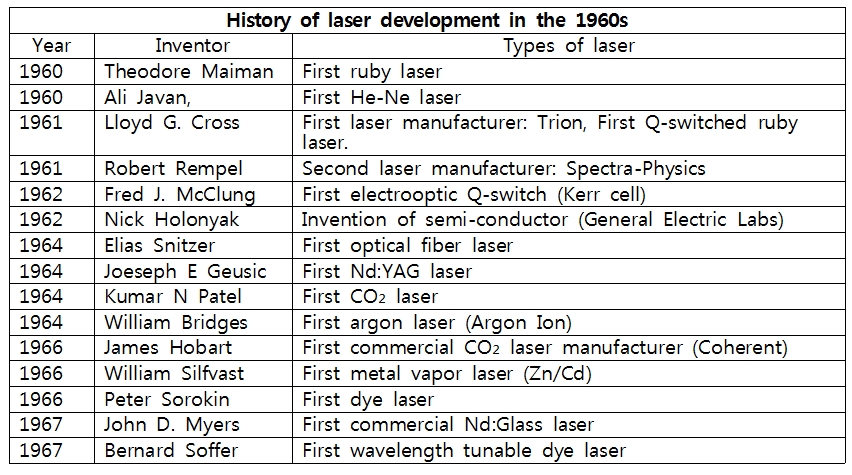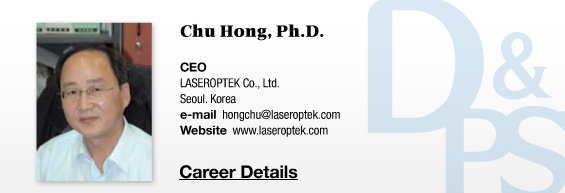In 1979, Goldman was officially designated as the Father of Laser Medicine in recognition of his contribution to laser medicine at Opto-Electronics Conference held in Munich. He played a crucial role in establishing the American Society for Laser Medicine and Surgery (ASLMS) in 1979 and was nominated the President of the organization in 1981.
From the 1960s to 1980s when Goldman led the field of laser medicine, vascular lesions and pigmented lesions were two of the most common conditions dermatologists treated. In the 60s, the ruby laser with the pulse duration of 500us (later 50ns) and Q-switched Nd:YAG laser were mainly used for pigmented lesions. Currently, the Q-switched ruby laser, Q-switched alexandrite laser and Q-switched Nd:YAG laser are often used for pigment treatments. During Goldman’s time people may not have been aware of the concept of chromophor. In other words, they may not have known that laser beams selectively destroy the target while incurring less damage to the normal tissues at certain wavelengths. However, as shown in <Table 1>, doctors at the time probably came to realize through trial and error that only two lasers (ruby and Nd:YAG) were suitable for pigment treatment among lasers available at the time. Through experience they found out that laser can selectively destroy pigmented lesions.
HELIOSⅡ/LOTUSⅡ/HYPERION – Manufacturer: LASEROPTEK(www.laseroptek.com)
In 1961, an electro-optical shutter invented by Fred J. McClung et al. provided a breakthrough for laser treatment of pigmented lesions. Using this new element, a Q-switched laser with a pulse duration in nanoseconds and a higher peak power could be developed. Compared to the previous free running laser, this new laser could minimize thermal damage to the skin and prevent burning. The higher peak power meant more selective destruction of the pigment target. In 1961, in the very first application in dermatology, the ruby laser and Nd:YAG laser were used to treat malignant melanoma.
Subsequently, the free-running and Q-switched ruby laser was used in tattoo removal but this method caused side effects including scarring, hyper- and hypopigmentation, etc. and came to fall out of use.
The fundamental cause of frequent side effects was the lack of precise control of laser output. In the early days, laser technology was still basic and laser devices available at the time were originally developed for industrial or experimental use and not for medical application. Technological advancements for making laser safer have come around and allowed development of medical laser optimized for each type of lesion. In the 1960s, showing the very possibility of applying laser to medicine was ground breaking and it was still too early to commercialize medical laser.

Table 1. History of laser development in the 1960s.
References
1. Goldman L. Pathology of the Effect of the Laser Beam on the Skin. Nature. 1963;197:912–914.
2. Hellwarth RW, McClung FJ : Giant Pulsations from ruby. Appl. Phys. 1962;33:838-841 and Bull. Am. Phys. Soc.1962;6:414.
-To be continued-





















